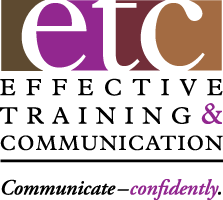‘Stand & Deliver’, a recent article on harnessing physical delivery power generated several questions from readers. I responded to them privately, but thought all of you would benefit from some excerpts of my comments.
‘I like waling around while presenting. What’s the problem with that?’
One of the concepts driving an audience-centric approach to presenting is that it doesn’t matter what the presenter likes or doesn’t like. It only matters what the audience likes, adds value to their experience and helps accomplish the objective that brought them in the room. Add to this the conscious effort to do those things that enhance the illusion of confidence, credibility and confidence and avoid doing those things that don’t.
That said, a little movement is not a bad thing, but a little can easily – and unconsciously – become a lot. And it often looks like it’s without purpose – simply walking off nervous energy. Obviously, you must do what you’re ultimately comfortable with, but keep challenging these habits from an audience – and image – perspective.
‘ I do a lot of training and like to move around the room to engage everyone. Is that a problem?’
Not if it’s done on purpose and for a purpose. I do a lot of training too and also work the whole room. But, I try to move to a different table or row in response to a question or comment, to connect someone to a point I’m making or ask a directed question. The farther back in the room I move, the more the people need to turn around to see what I’m doing. So, I try to minimize that inconvenience for them while still engaging the folks in the cheap seats. Most of the time, my spot is in the front of the room.
The best way to move your audience to believe you’re confident, credible and competent is not to move at all. So, stand still and deliver, unless you have a good – and motivated – reason to move.
My thanks to readers for these questions. If you have any others about delivering audience-centric presentations, contact me directly. I’ll respond privately and include the answer in future issue.
